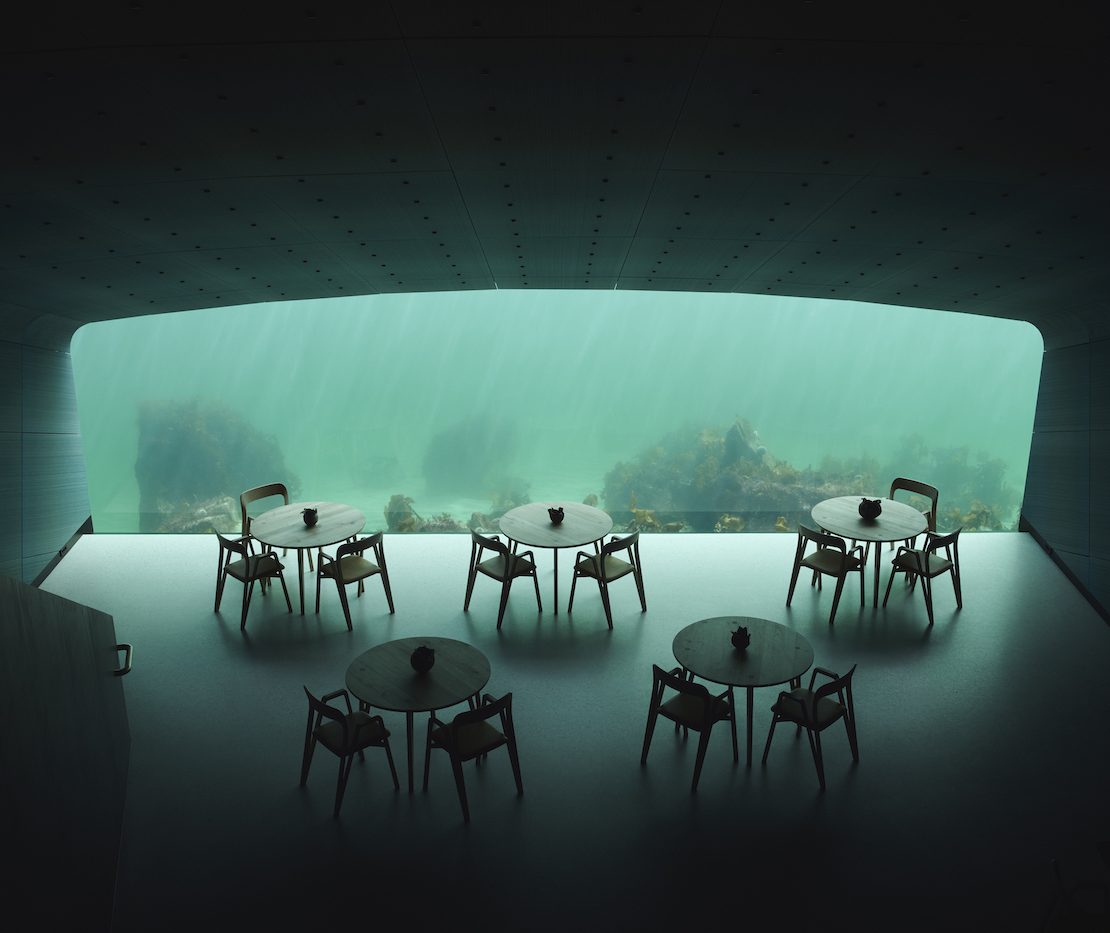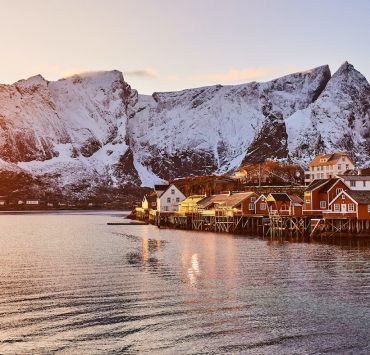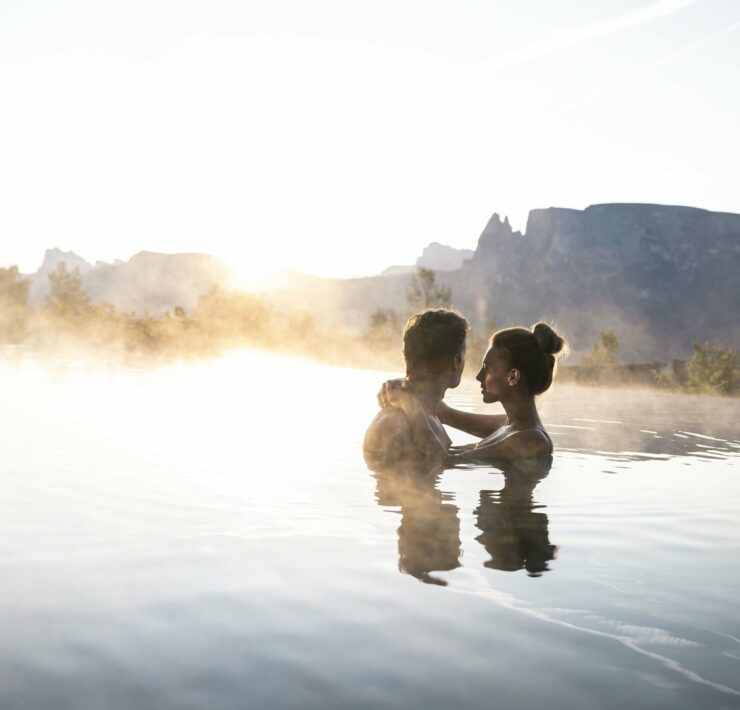Forty miles away from any sizeable town or city sits the sparsely populated Norwegian village of Båly in Lindesnes. Follow its rugged coastline shaped by harsh weather conditions and you’ll find a half-submerged monolithic structure extending onto the rocks, a vision suitably dramatic for its surroundings. This is where we find Under – Europe’s first underwater restaurant, and the world’s largest – the bold entrepreneurial endeavour of brothers and hoteliers Stig and Gaute Ubostad.

You could say that Under transports you to a whole new world, but what it really offers is something far greater: its world, enriched by alternative perspectives, in all its beauty, complexity, and wonder. Entering Under is a descent into mystery and awe, a step outside your comfort zone through an impeccable symbiosis of cuisine and design. First, we dove into the dining experience with head chef Nicolai Ellitsgaard Pedersen, whose 18-course meal of organic forms and stimulating creations earned Norway its first Michelin star.
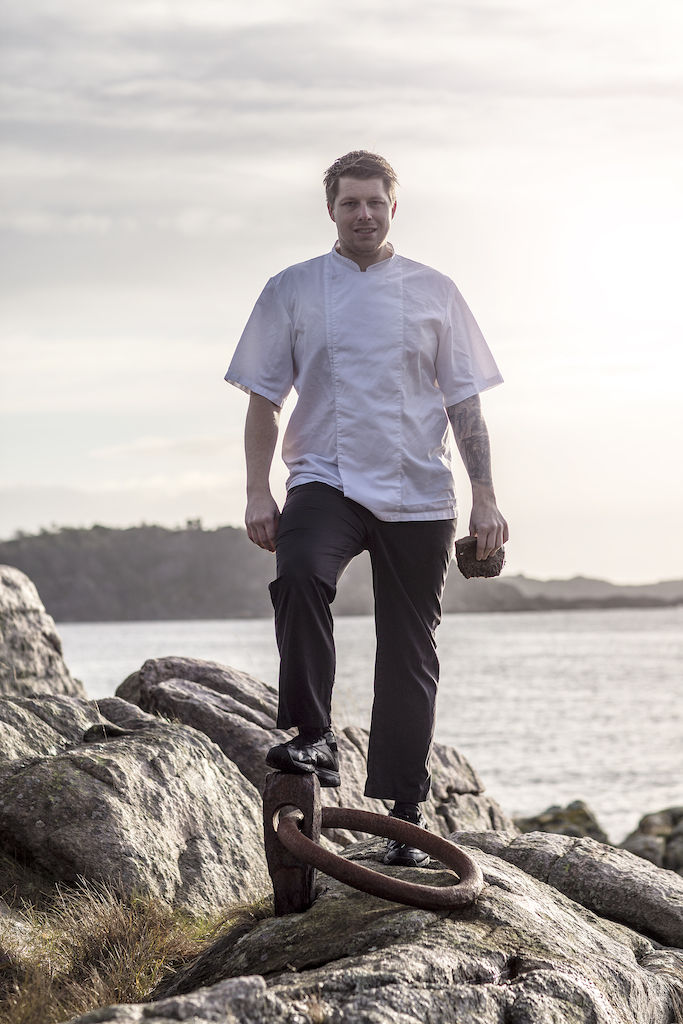
Nicolai Ellitsgaard Pedersen on Under’s Exceptional Culinary Opportunities
Tell us about how you came to Under and how you prepared to take on this role in such a unique environment.
2.5 years before the opening, the Ubostad Brothers (the main investors) invited me for a coffee, where they showed me some computer-made images. I fell in love right away, and thought to myself that this was a chance I’d be stupid not to take—I mean, how many times do you get a chance like this? The day after the meeting I started working on the menu, and worked very slowly from day one, testing different ingredients, writing down ideas, finding new producers, convincing fishermen to take care of bycatch instead of throwing it all away, and speaking with marine biologists about new and unused ingredients and produces that might be interesting.
Your produce is as ‘regional’ as it gets. What sort of challenges or creative opportunities arise when your cooking is dependent on what naturally occurs in your surroundings?
It can be challenging, of course. The opportunities are great since we often buy directly from a fisherman, and that enables us to control the quality or ageing process of different fish. You know that it’s caught that day, whereas if we buy from a big company, it’s more difficult to know exactly how old the fish you get delivered is. We also have our own live storage for crustaceans and molluscs. For me, it is important for quality control that all shellfish and crustaceans come alive to Under – that’s one of my rules.
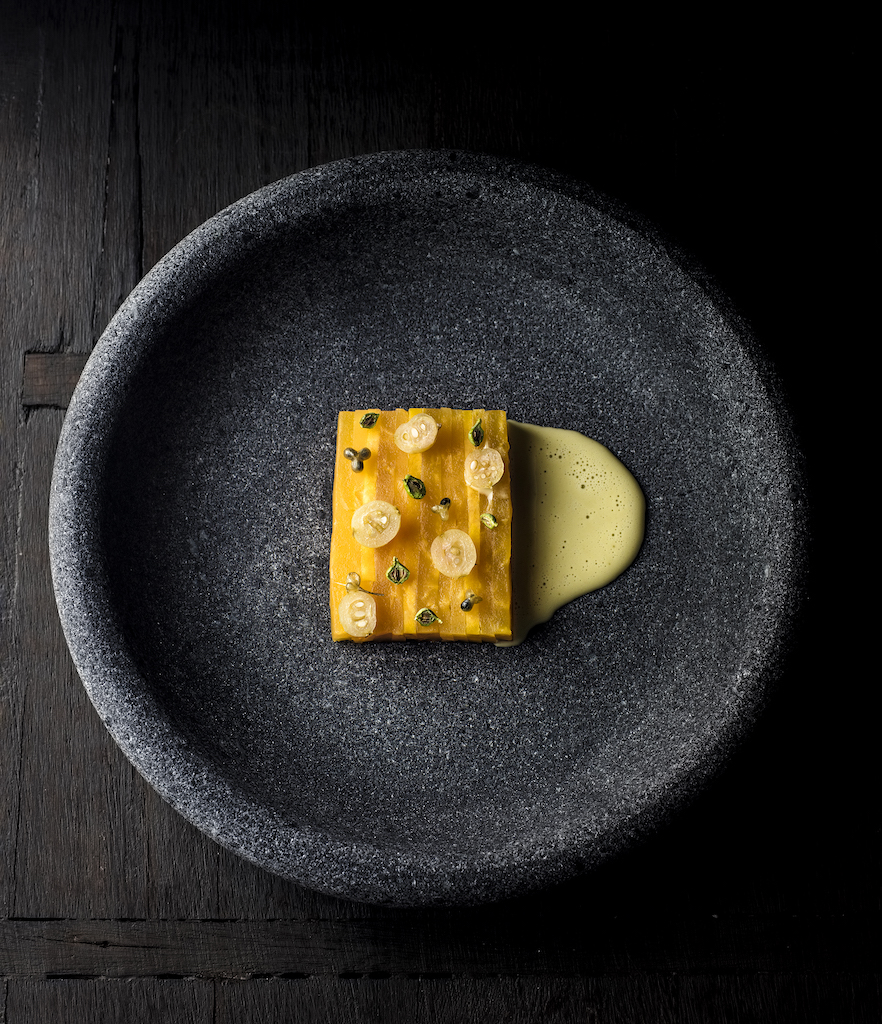
How do your processes in the kitchen change when you’re foraging and catching the food yourself?
Our fish are caught by fishermen on local boats or on our boat when fishing for langoustine. All the langoustine we don’t use get sold to the rest of Norway and some are also shipped abroad alive.
Foraging is all about structure: I used to start every first morning of the week with foraging seaweeds and different days for the rest of the herbs. Big foraging we do in groups of 3–4 people.
The forests and the oceans are so inspiring.
What’s the greatest discovery you’ve made in sourcing ingredients yourself or working with local farmers and marine biologists?
The seaweed tastes like truffle. I spent six months looking for it after I tasted it with a friend from the Faroe Islands. No one really knew about it, so I had to find out everything on my own. I tried plenty of different seaweeds until I finally found them.
What is it like when your daily ‘trip to the office’ is a descent underwater – does this mysterious universe still amaze you?
Hopefully, it will astonish me forever! I still get amazed, and I really hope that this will continue.
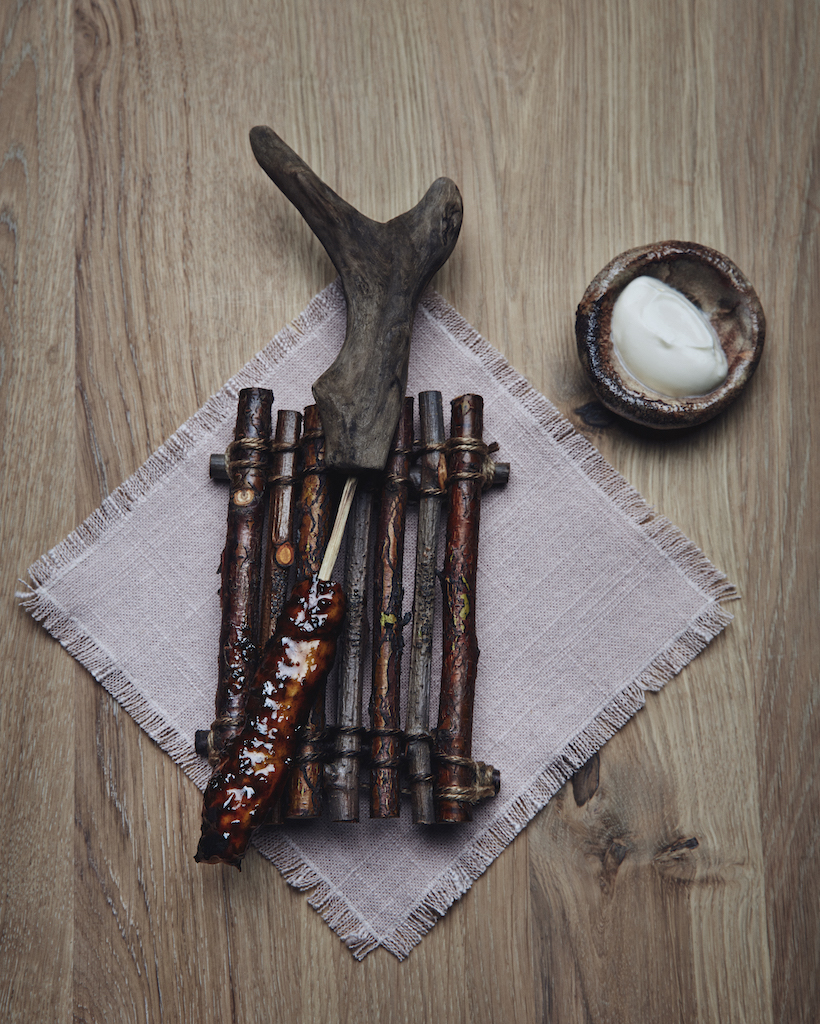
If food provides a window into a culture, how does the menu you’ve created at Under speak to or represent Nordic culture?
We only use ingredients that can live in this part of Norway. Some shells we need to go to Bergen to get, but my criteria are that we must be able to find them here. One of our most famous signature dishes is our “Fiskepudding” a traditional Norwegian dish made our way.
Your menu is infused with Asian influences – in what ways do Asian and Nordic cuisine complement or contrast each other?
In Asia or Japan, it’s all about the freshness and quality of the fish or shell. This is a mindset I’ve adopted: for me, quality is the most important aspect. We use different “Asian sauces” like Garums/fish sauce – we make our own with our ingredients but with inspiration from old Asian recipes.
You’ve said it’s significant that guests ‘don’t know what they’re going to eat before eating it. What does this element of the unknown bring to the culinary experience?
The element of surprise is very essential. I think that if you don’t know what is waiting around the corner, then you will get more captivated and engrossed by the next dish in front of you.
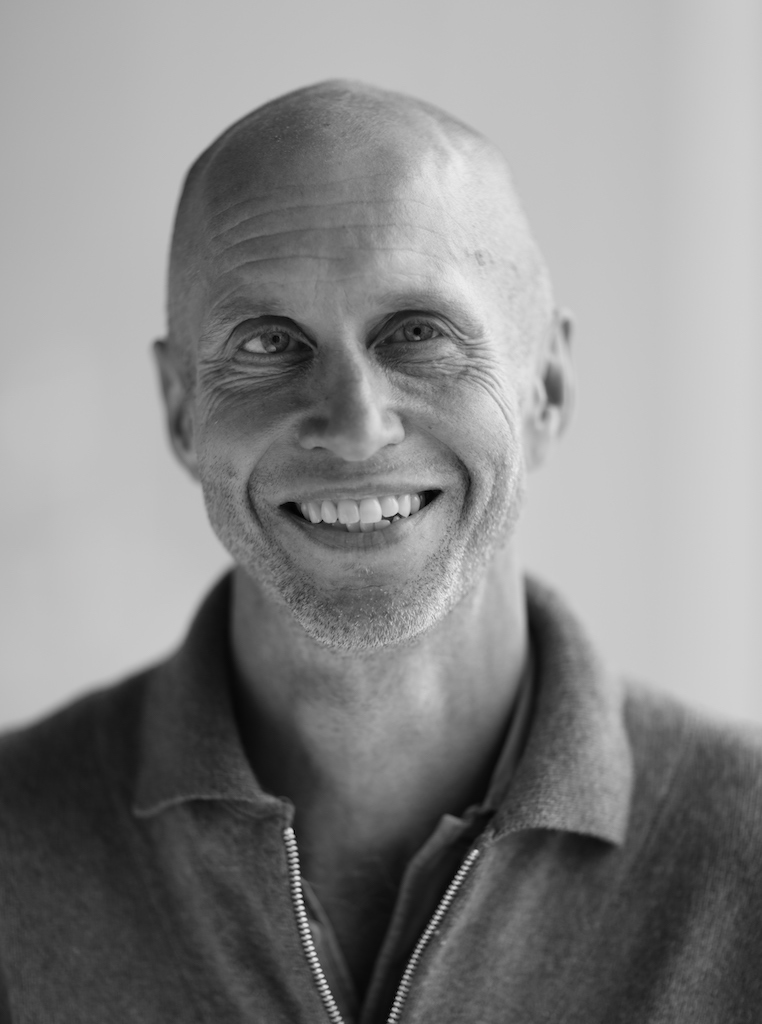
Snøhetta’s Rune Grasdal on Creating the World of Under
Before embarking on a journey into the unknown through Nicolai’s menu, the first encounter with Under is of solid architectural forms leading into ethereal interiors. The work is of Norway’s own award-winning architecture firm Snøhetta, renowned for the magnificent Opera House of Oslo. Smooth, modern spaces move you gradually to the sea bed, in a serene setting contrasting the harsh outdoor conditions. How was such a world created? Rune Grasdal of Snøhetta answered all our design questions.
The monolithic structure of the restaurant has drawn comparisons to a whale and a shipwreck, among others. Was there one idea in particular that inspired its shape and positioning?
The shape was created based on the task of bringing guests as simply and safely as possible from 3 meters above sea level to 5 meters below. The answer became a “concrete pipe” that brings guests down. The curved transverse profile ensures that the building resists water pressure and large waves.
How did the location selected for the restaurant – not only Lindesnes but this specific inlet – inform your design decisions?
The spot for the restaurant was chosen to have the greatest possible contact with nature, the sea, and the forces of nature. We also wanted the restaurant to appear as an artificial reef where clams and seagrass can grow on the building. The building should be intuitive and easy to understand; it should feel safe and comfortable and, at the same time, be an exciting window out to an unknown world.
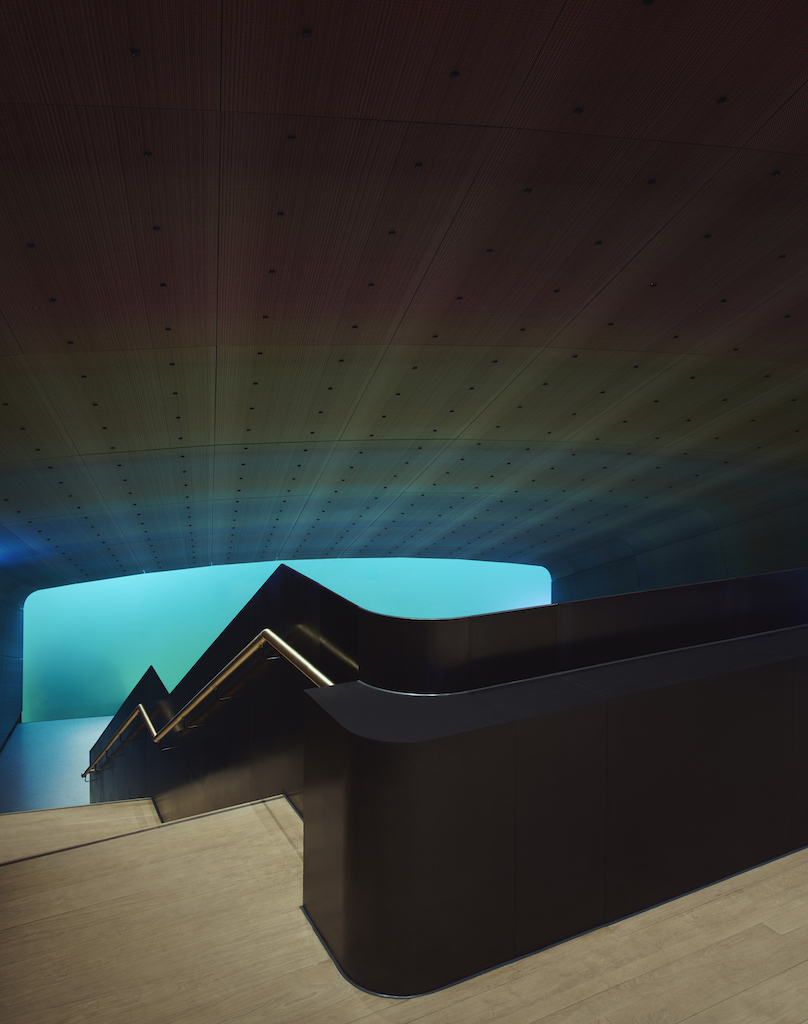
What are the main adjustments you have to make in approach and processes when constructing a below-water building rather than the usual above-land?
Great forces from water pressure and large waves must be considered. In addition, any small leaks must be fixed properly. The most important thing is that visitors have a great experience down in the restaurant and feel safe. Good acoustics, lighting, deliberate material use and a space that’s easy for visitors to orientate themselves are of utmost importance.
Before actually immersing the structure in water, what sort of research needed to be done to ensure it would work?
It was a collaboration with engineers with special expertise from the North Sea oil industry and from tunnel construction in Norway. Many calculations and simulations of large waves were also done to test what the building had to endure.
What sort of effect do you think the ‘underwater’ experience leaves on people? How did you seek to emphasize that in your design decisions?
It's a magical and exceptional feeling to be in the restaurant. You have plenty of time to study life in the sea without disturbing the different species, and light and weather conditions lead to many wonderful nature experiences. The large window is the main stage for the experience, but the main room itself is also an experience with its large volume that at the same time feels warm and intimate. The use of materials and colours is important here.
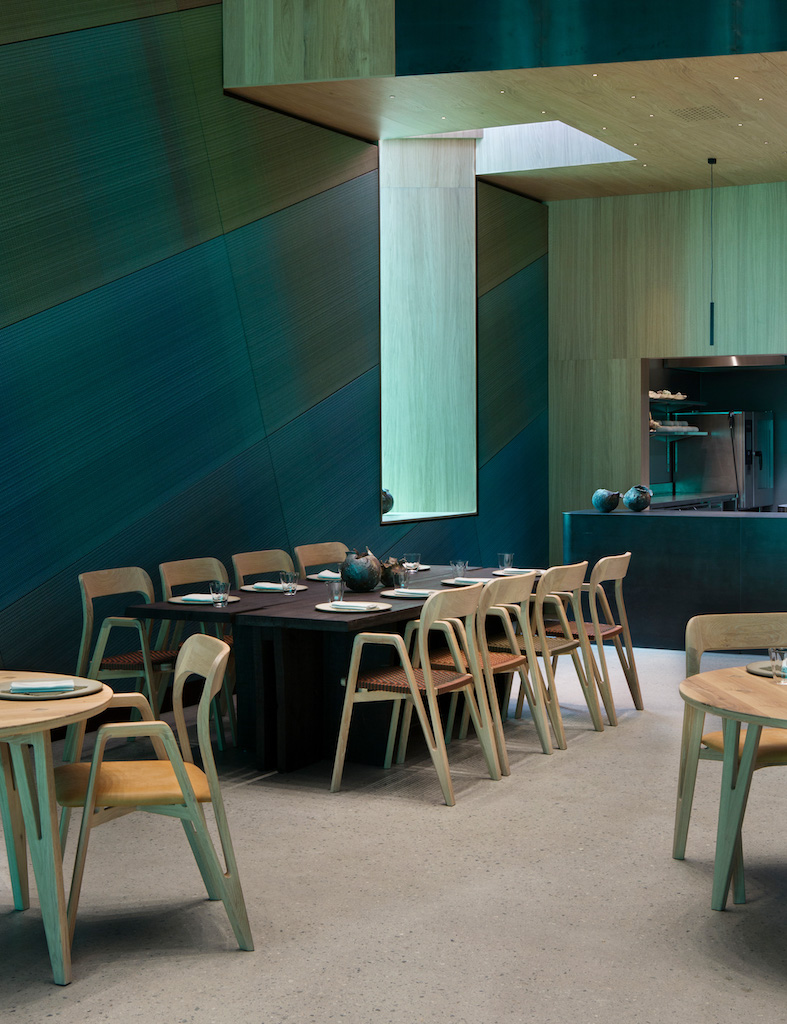
How can design transform our relationship with nature? In what ways does your work at Under seeking to do so?
Under gives visitors access to a new world and an experience of nature they have not had before. We believe this will help visitors to have a more conscious relationship with the sea and awareness of how important it is to all of us. In addition to Under, a visitor centre will also be established next door where visitors can get more in-depth information about marine biology, pollution, aquaculture, fishing, etc.
As ‘under’ can also translate as ‘wonder’ in Norwegian, how do you maintain a sense of wonder in your everyday life?
By constantly being curious and open to new things.
If you could change the world right now, what would you do?
We are now constructing buildings that are more environmentally friendly (as part of the Powerhouse project), and that produce more energy than they use during their lifetimes. We are trying to set an example, since the building industry accounts for 40% of greenhouse gas emissions.
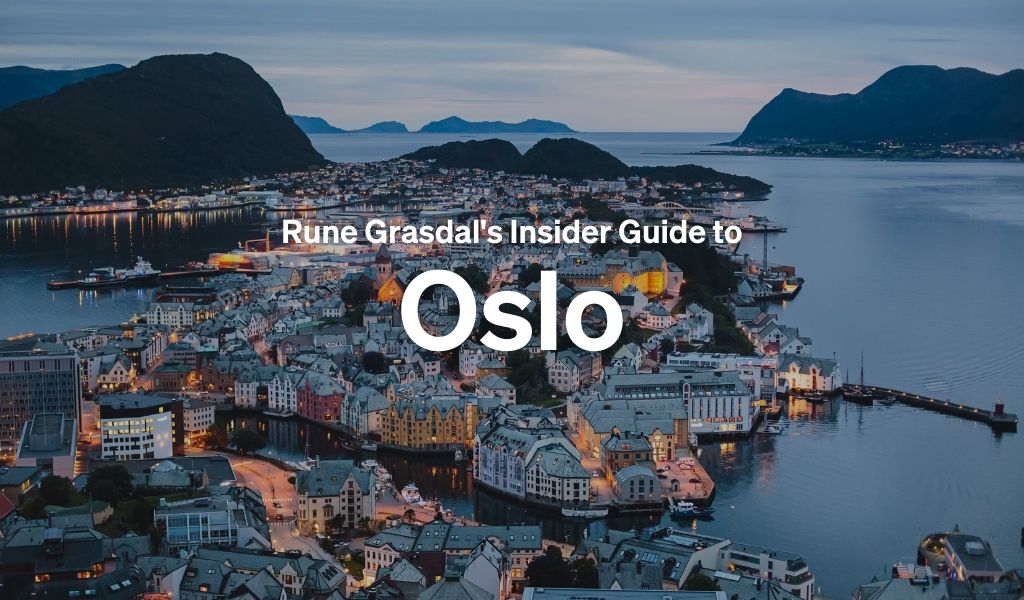
Name your favourite city. What are the top 5 spots here you’d recommend to your best friend when he or she’s in town?
The answer can only be Oslo.
- The opera house
- The fjord and its islands
- Nordmarka, a lush forest close to Oslo with lakes.
- The Munch Museum when it’s finished
- The new National Gallery when it's finished
Read More:
- Sitting Down With Michelin Star Chef and Culinary Provocateur Tim Raue
- Our Favourite Architecture Books
Last Updated on March 16, 2024 by Editorial Team
As editor-in-chief, Raffaele infuses the magazine with a cosmopolitan flair, drawing from his experiences in London, Berlin, New York, and Barcelona. His 20-year tenure with luxury brands, coupled with a love for travel and food, enriches the magazine's content.






